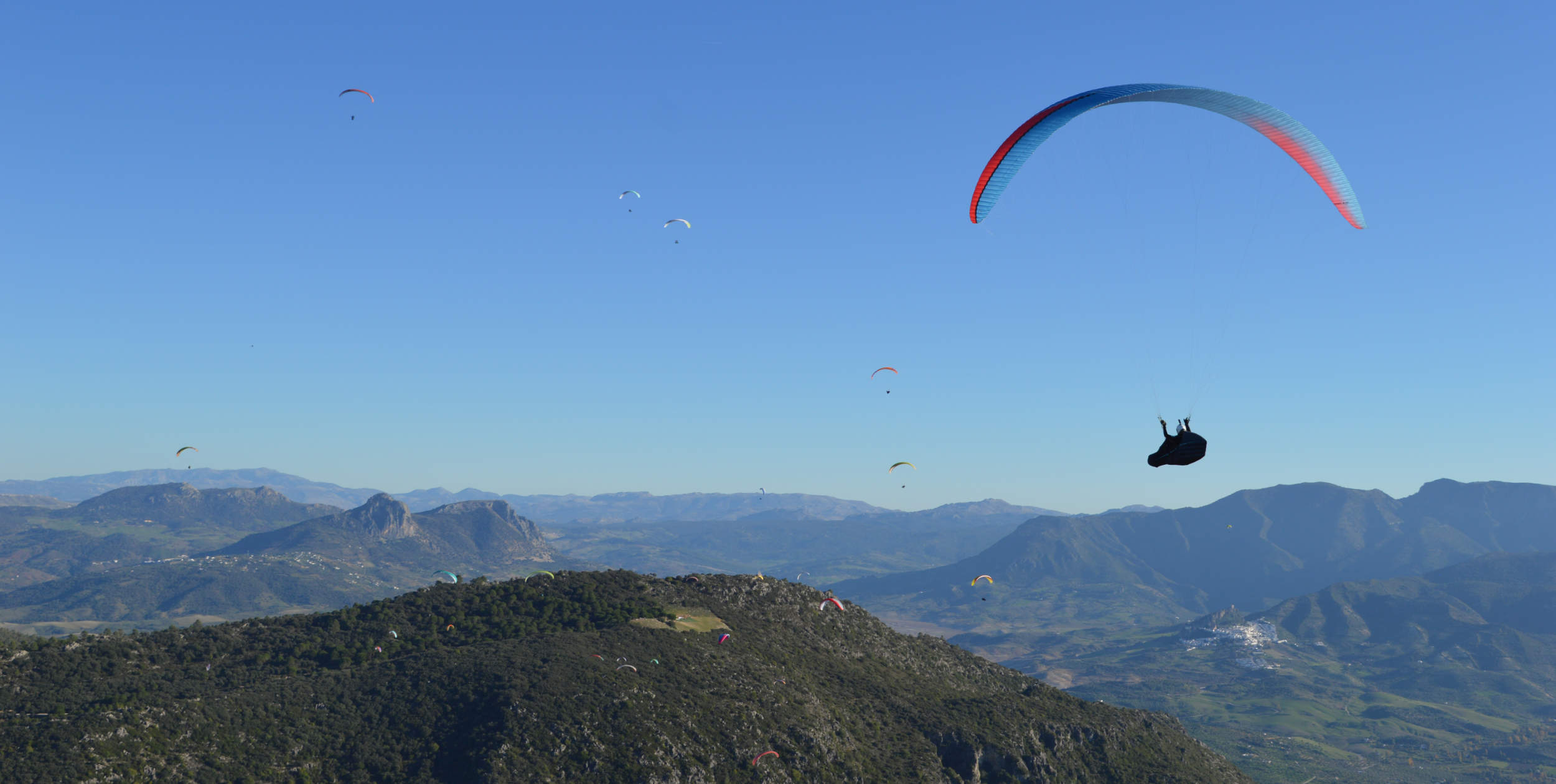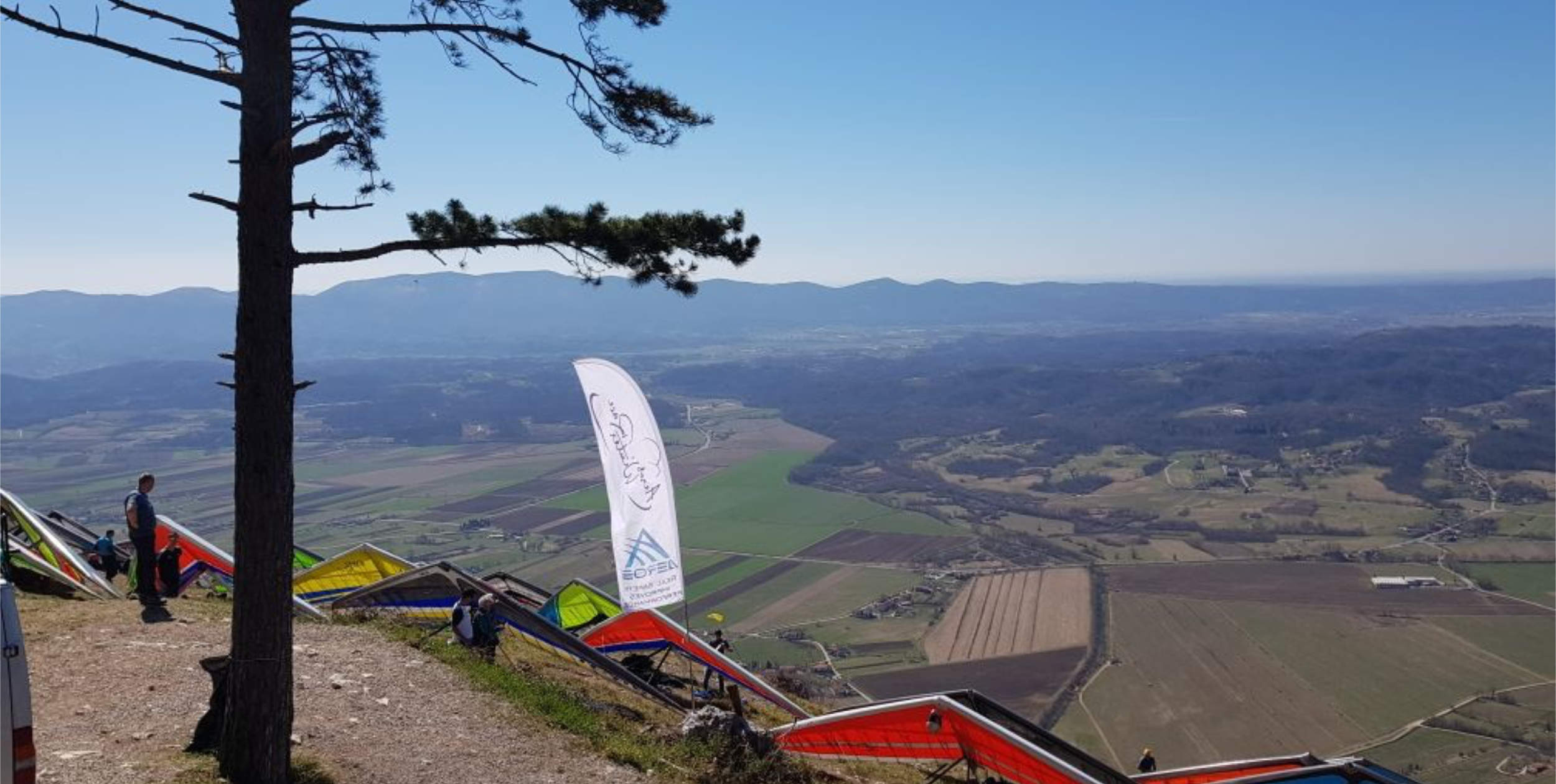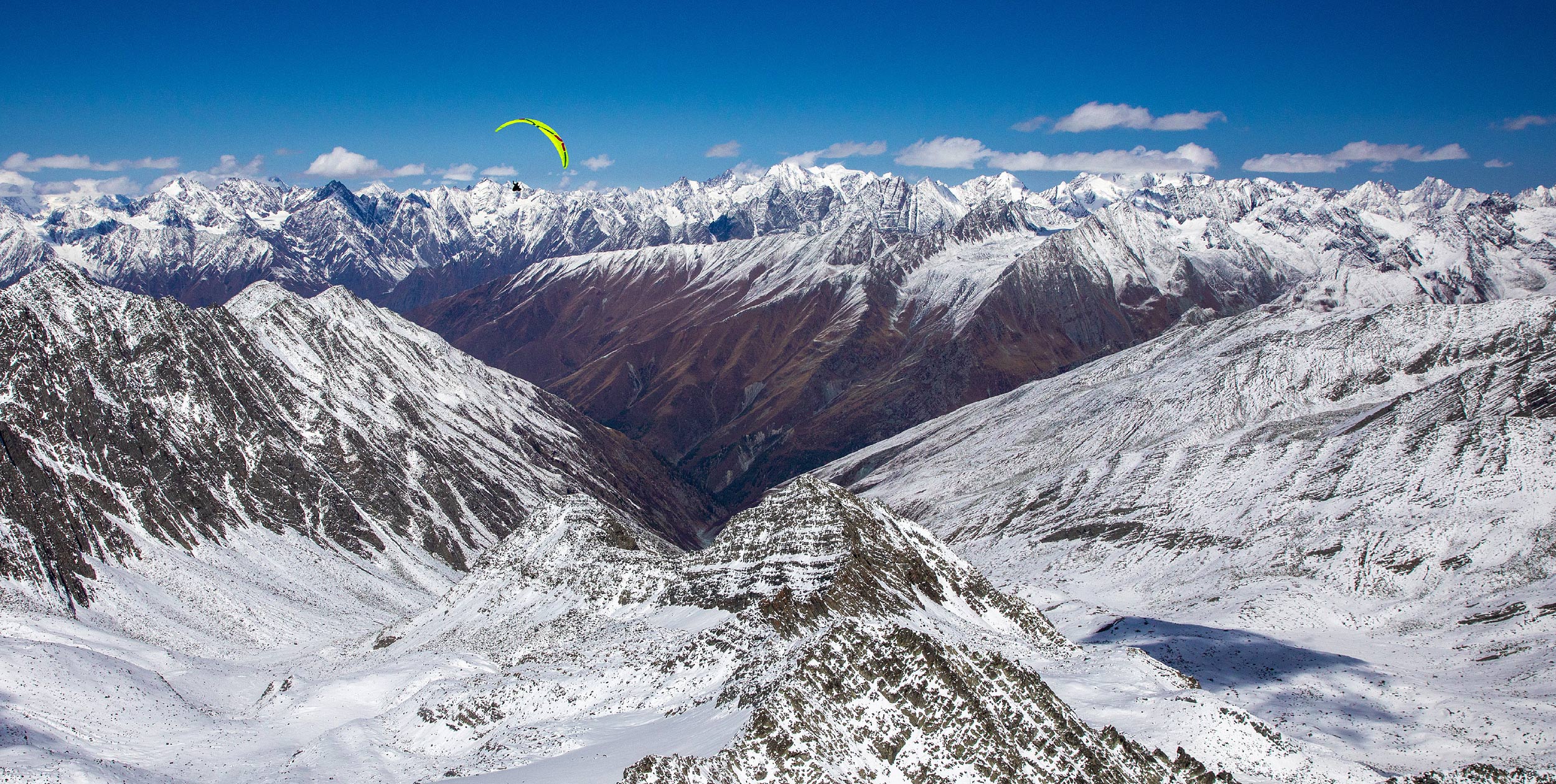Accelerated flight isn’t about stamping on the speed bar and praying, as Bob Drury and friends find out
‘Full bar’ on your speed system was once the exclusive haunt of the desperate, the crazy or the very skilled. Paragliders were neither built nor tested at high speeds, and accelerated flight was very much a ‘rough science’. It was simple: a suitable amount of speed bar travel was allotted to production wings, whilst the competition models carried as much as the riser and pilot dare take.
ACPUL, the main testing authority in the early 90s didn’t even conduct any tests on the glider’s behaviour at accelerated speeds. It was a bizarre omission that meant that ACPUL certified gliders were only tested over the lower two thirds of their usable speed range.
Times changed though and most modern paragliders are now built with a very usable accelerated speed range and LTF and CEN tests now include both symmetric and 70% asymmetric deflations at the wing’s top accelerated speed. Reaching for your speed bar nowadays shouldn’t just be a last ditch emergency measure to stop you being blown over the back of the hill, but should instead be an integral part of your everyday flying.
Consider an average, modern 2/3 glider. It will probably stall at around 22 km/h, flies at around 38 km/h at ‘hands up’ (trim speed) and accelerate to maybe 56 km/h with the speedbar. A glider like that has a speed range of 34 km/h with 18 km/h of that on the bar, meaning over 50% of the usable speed range is obtained by pushing the speed bar.
Knowing how best to use this additional speed range will give you greater performance as you penetrate into headwinds. Nearly every flight we make involves some kind of into wind glide, be it pushing forward under a cloud in the flatlands, to making a valley crossing in the mountains. However, you can’t just stamp on the bar and cruise off into the sunset.
To maximise your use of a speed system, we first need to understand what happens to your glider when you press the speed bar, and how this will affect your flight. It’s also very important to realise how much the pilot acts as a pendulum weight sitting 10 metres beneath the wing, and consequently, how pilot and glider often fly at different speeds for brief moments.
On the initial press of the speed bar, the glider’s angle of attack drops, the glider accelerates and pitches forward in front of the pilot. For a brief second the glider is flying through the air faster than the pilot. Eventually our pendular motion swings the pilot back under the wing and the pilot reaches the new accelerated speed of the wing. During that moment the glider can pitch a long way in front of the pilot and the resulting dive may lose substantial height. Consequently, how you initiate accelerated flight is incredibly important for both your safety and performance.
THE SUBTLE ART OF SPEEDING UP
Let’s take the case of two well-known local pilots, ‘Heavy-handed Henry’ and ‘Clued-up Chris’ who are both competing in their country’s National Championships. Let’s look first at Heavy-handed Henry’s method of acceleration.
Being a man with little feel for a paraglider and far more balls than sense, Henry likes to simply slam his feet down on the bar, jamming the riser pulleys together to send the glider instantly to full speed.
What Henry doesn’t realise is that his heavy handed approach pitches the glider a long way forward, the angle of attack is greatly reduced, the wing is flying very fast, and for a moment his glider becomes very prone to big, violent deflations. (Remember, no certification system tests how easily a glider collapses, they only measure what happens once it does collapse).
The first three attempts to reach full speed see Henry accidentally induce 80% deflations that spin him around 180 degrees, and shed loads of his hard-earned altitude. The harder and faster Henry stamps on the speed bar, the further the glider pitchs and the more likely it is to collapse.
When on Henry’s fourth attempt the glider stays inflated and doesn’t collapse, the sudden pitching of the wing forward results in a huge pendular swing, only settling when both glider and Henry return to the same speed. This dive eats away at Henry’s altitude and again he loses more height unnecessarily.
Clued-up Chris, however, has got it sussed. He has a natural feel for the dynamics of flight and prefers to initiate accelerated flight slowly, smoothly and progressively.
Rather than stamping on the bar, he eases the speed on, carefully monitoring the pitch of the glider and allowing time for his body to catch up to the wing’s now higher speed before pushing on more bar. Eventually he reaches top speed too, but without ever forcing the glider to pitch so far forward that it might collapse.
Also by allowing time for his body to catch up with the wing’s new speed he has avoided most of the pendular dive, and has reached his top speed with substantially more height than his friend Henry.
ACTIVE GLIDING
Once both gliders are flying at full speed there is a marked difference in the way the two pilots use their speed bars. Heavy-handed Henry simply sits rigid with the bar jammed on full. He fails to feel or react to the movement and buffeting of the air he travels through and consequently suffers another three monstrous deflations, the last of which leaves him hanging in a tree just short of the goal line.
Chris on the other hand chooses to actively control the pitch of his wing as it moves through the air. Just as he actively pilots the wing with the brakes during non-accelerated flight, he now uses the speed bar to trim his glider’s air speed, and consequently its angle of attack, to match the movements of the air.
As the wing pitches forward he eases off the bar, slowing the glider down slightly, allowing time for his body to catch up. Equally, when the glider pitches back behind him he gently pushes more bar on, speeding the wing up slightly which allows time for the glider to catch up with the pilot. By doing this Chris is able to keep the wing directly above his head and avoids any unnecessary pitching. His legs are rarely still for more than a few seconds unless in completely calm air.
To steer the glider he uses only weightshift, as touching the brakes causes his glider to slow suddenly and then dive again, which is bad for both his security and performance. Also, some gliders react badly to brake input during accelerated flight. He only interrupts the glider if it feels like it’s telling him that it’s about to collapse.
Clued-up Chris passes over his friend’s tree with several hundred metres to spare. To slow the glider down he eases off the bar smoothly and gently to avoid causing the wing to pitch back violently, climb, and then dive again. He crosses the line with ease, wins the task, spirals down to buy Heavy-handed Henry a beer, which Henry unfortunately drops!
A WORD OF WARNING
Regardless of how good you are with the speed bar almost every glider is more prone to deflations during accelerated flight due to the decrease in angle of attack. In addition, the extra speed you are carrying into the collapse means the wing reacts far more violently. During certification tests almost every glider pulls its highest grades during the accelerated tests, and even very safe wings react faster when collapsed on the speed bar. For these reasons you should only consider using the speed bar when you have enough height to recover from a major collapse. Skimming trees at full speed will eventually see you in them!
If you are unlucky enough to have a big closure when on the bar then pull your feet back immediately and slow down the side of the wing that’s still flying. If you don’t and you keep a lot of bar on you’re likely to drop the glider into a tight, fast spiral.
If used with sensitivity, your speed system will see you arriving higher and quicker on long glides and in much more safety than had you just jammed on the bar, pulley to pulley, and prayed you’d make it. By utilising your glider’s entire speed range you might open up a whole new level of performance that you didn’t know your glider even had.
PRACTICAL TIPS
Make sure your harness is set up properly. Your speed line should run from your riser down through a pulley stitched to your harness directly below the harness, and then out via another pulley to your feet. If you find you are being tipped back in your harness as you push on the bar, then it means your first harness pulleys are located further forward than the centre of gravity. You might also find it useful to gently pull back against your risers with your hands to hold your flying positionas you push on the bar.
To be able to use the full speed range of your glider you may have to shorten your speed bar cords or add a ladder system. Many ladder systems can be set up so that ‘legs straight’ on the lowest bar is around half speed in the accelerated speed range – good for cruising into gentle head winds. The second bar is only used to get you up to max speed on the rare occasions where it’s both practical and safe to do so.
Arrange your speed system so you can access it without taking your hands off. Try pulling the top bar almost tight to the base of your seat and then leaving a loop hanging down to hook your heel in.







